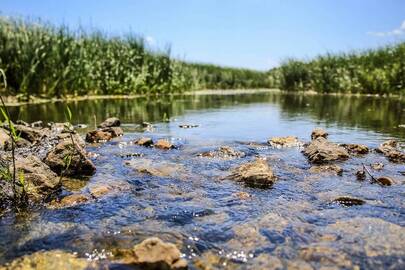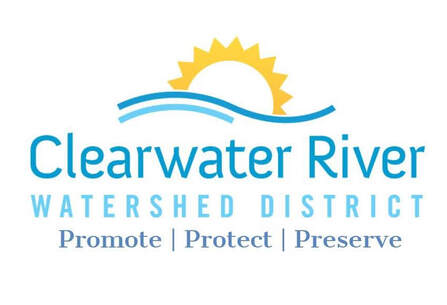Our History

The area encompassed by the Clearwater River Watershed District (CRWD) is rich in soil and water resources. The presence of those resources has encouraged the growth of two economic mainstays in this Central Minnesota territory – farming and tourism. Around these basics have grown the communities that support their needs. As population and industry grow, those priceless resources, which we often take for granted, may deteriorate.
In the 1960s and early 1970s, those who fished and enjoyed the waters of the Clearwater Chain of Lakes began to notice a decrease in the clarity of those waters, an increase in the number of rough fish (bullheads and carp), and an increase in the growth of algae on the surface of the water. Property owners sought new tests from scientists interested in water quality. Those tests revealed that the nutrient content of the water had increased substantially since 1946 – phosphorus was coming into the lake at a rate almost double the rate considered damaging.
The lakes through which the Clearwater River flowed were aging much too quickly. That process, which is a natural phenomenon called "eutrophication," was being helped along at an alarming rate via pollution entering the river system from cities, farmland, private property, and industry.
Further reports concluded that the rate of phosphorus input could be reduced by as much as 50% if the cities of Watkins, Kimball, and Annandale, and the Modern Craftsmen's Milk Association of Watkins installed on-land waste treatment systems instead of discharging sewage and industrial effluents into the Clearwater River and Warner Creek. In addition, if the phosphorus input from all non-point sources (such as septic tanks, agricultural wastes, storm water runoff, and soil erosion) could be significantly reduced, the water quality in the watershed could be restored to an acceptable level.
After a lengthy series of meetings and legal research, those concerned came to the conclusion that only a watershed district, with its powers of enforcement and its abilities to assess and to obtain federal and state funding, could tackle the pollution problem in the Chain of Lakes. The Clearwater River Watershed District was the culmination of years of hard work and the beginning of many more years of work aimed at undoing some of the damage done over a long period of time to one of our most important resources – our lakes and streams.
The Clearwater River Watershed District was established as a unit of local government on April 9, 1975, by order of the Minnesota Water Resources Board, acting under authority of Chapter 112, MSA (the Minnesota Watershed Act). Though the original thrust of the CRWD and its five-member Board of Managers was the improvement of water quality in the Clearwater River Chain of Lakes, its scope has grown into a complete program of water management within its boundaries.
In the 1960s and early 1970s, those who fished and enjoyed the waters of the Clearwater Chain of Lakes began to notice a decrease in the clarity of those waters, an increase in the number of rough fish (bullheads and carp), and an increase in the growth of algae on the surface of the water. Property owners sought new tests from scientists interested in water quality. Those tests revealed that the nutrient content of the water had increased substantially since 1946 – phosphorus was coming into the lake at a rate almost double the rate considered damaging.
The lakes through which the Clearwater River flowed were aging much too quickly. That process, which is a natural phenomenon called "eutrophication," was being helped along at an alarming rate via pollution entering the river system from cities, farmland, private property, and industry.
Further reports concluded that the rate of phosphorus input could be reduced by as much as 50% if the cities of Watkins, Kimball, and Annandale, and the Modern Craftsmen's Milk Association of Watkins installed on-land waste treatment systems instead of discharging sewage and industrial effluents into the Clearwater River and Warner Creek. In addition, if the phosphorus input from all non-point sources (such as septic tanks, agricultural wastes, storm water runoff, and soil erosion) could be significantly reduced, the water quality in the watershed could be restored to an acceptable level.
After a lengthy series of meetings and legal research, those concerned came to the conclusion that only a watershed district, with its powers of enforcement and its abilities to assess and to obtain federal and state funding, could tackle the pollution problem in the Chain of Lakes. The Clearwater River Watershed District was the culmination of years of hard work and the beginning of many more years of work aimed at undoing some of the damage done over a long period of time to one of our most important resources – our lakes and streams.
The Clearwater River Watershed District was established as a unit of local government on April 9, 1975, by order of the Minnesota Water Resources Board, acting under authority of Chapter 112, MSA (the Minnesota Watershed Act). Though the original thrust of the CRWD and its five-member Board of Managers was the improvement of water quality in the Clearwater River Chain of Lakes, its scope has grown into a complete program of water management within its boundaries.

